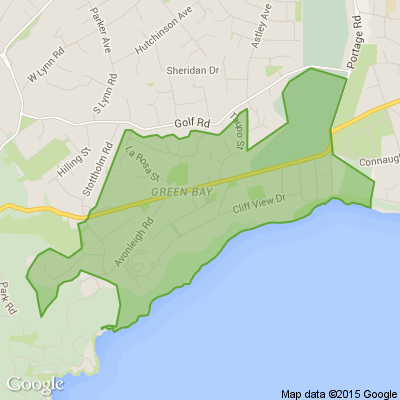IRD sending ONE MILLION letters to Kiwis on wrong KiwiSaver tax rate
The tax department began sending out letters to people who had not paid enough tax on their KiwiSaver investments in May prompting an outcry from people worried about getting an unexpected tax bill. In June, the IRD revealed 450,000 people had been paying the wrong tax rate on KiwiSaver and other PIE (portfolio investment entity) investment schemes. But weeks later it updated the figure to 1.5 million people with 950,000 estimated to have overpaid tax of around $42 million and 550,000 underpaying tax of between $45m to $50m in the last tax year. People who have underpaid tax will get a bill telling them how much they need to pay but those who have overpaid won't get a refund. From July, over-payers have been sent letters urging them to change their rates.
An IRD spokeswoman said it had so far sent out just over 930,000 letters to customers who are on the wrong PIR rate for KiwiSaver. "We are sending the letters in batches so not everyone who is due a letter has received one so far." But it expected the mail-out to be complete in November and for there to be more than a million letters in total. "We do not have a definitive final number at this time." Auckland financial adviser Rachelle Bland said she knew two individuals who had now received letters from the IRD advising that they were paying too much tax.
One is on the top 28 per cent tax rate and has been told she should only be paying 10.5 per cent. The woman was told: "Your investment with KiwiSaver scheme [scheme name removed] is being taxed at 28 per cent. We've calculated your rate based on the income details we hold for you and the table below, and suggest for the 2020 tax year you change it to 10.5 per cent. A tax rate of 10.5 per cent is for people who earn $14k or less in taxable income. The letter also stated: "It is important that the rate your KiwiSaver scheme is taxed at is correct. If the rate is too low, you may have a tax bill at the end of the year. If the rate is too high you are unable to claim a refund."
The second is also on the top tax rate but should be on 17.5 per cent because she earns between $14,001 and $48k in taxable income. Both were told to contact their KiwiSaver providers directly to change the rate. But Bland said many of those receiving the letters may not be aware who their KiwiSaver provider is or how to get in contact with them. "I would like to think it will be acted on but I think it is going to take a massive education campaign."
Some people may have been on the wrong tax rate since joining KiwiSaver potentially costing them hundreds of dollars in overpaid tax and lost returns. Bland was part of a group of financial advisers which warned the government about the over-taxation of KiwiSaver more than a year ago. Inland Revenue has said it only became able to identify which KiwiSaver members were underpaying or over-paying tax since switching to a new IT system in April. Bland believes part of the problem lies with auto-enrolment forms which sign people up to KiwiSaver but do not allow them to specify which prescribed investor rate they need to be on. People are automatically put on the highest rate of 28 per cent and then must tell their provider to change it. But Bland said by the time the money got to the provider - three months later - many were not aware they needed to change the rate or had forgotten about it. She is running a parliamentary petition to get the IRD to change its forms so people have to specify what prescribed investor rate they should be on from the start and has written to the IRD and its minister Stuart Nash. In a response from Tony Donoghue, manager of the commissioner's correspondence at the IRD, said the KiwiSaver forms were designed to transfer an employee's contributions to an investment company and the requirements should not be confused with the tax rules which applied to PIEs. "The PIE rules require investors to choose a PIR at the time they invest, so the entity pays the correct amount of tax on investment earnings. This obligation is set out in product disclosure statements issued to investors when they join a scheme.
"Regardless of how people join, every investor receives a product disclosure statement, which provides information on what taxes the investor is required to pay." All PIE providers are legally required to check investors are on the right rate every year. KiwiSaver providers send out annual letters to get people to switch change rates but say they don't have much of a response. Donoghue said officials were considering what legislative changes could be made to improve the PIE regime. "This could include authority for Inland Revenue to automatically notify investment entities when investors have not declared an appropriate PIR." However changes would require parliamentary approval, he added.
==========================================================
Unlock the Answer: Today’s Riddle is Trickier Than You Think!
What English word retains the same pronunciation, even after you take away four of its five letters?
Do you think you know the answer to our daily riddle? Don't spoil it for your neighbours! Simply 'Like' this post and we'll post the answer in the comments below at 2pm.
Want to stop seeing riddles in your newsfeed?
Head here and hover on the Following button on the top right of the page (and it will show Unfollow) and then click it. If it is giving you the option to Follow, then you've successfully unfollowed the Riddles page.

Tips on Accelerating Your Comfort Level with a New Mattress
Getting started on the quest for the perfect night’s sleep with a new mattress can be exciting, but it often requires a period of adjustment.
If you've recently invested in a new mattress and are wondering about the time frame for adjustment, you're not alone.
Understanding the typical adjustment period can greatly improve your sleep health and ensure you get the most comfort out of your new bed.
The Personal Touch: Individual Variation in Adjustment
When it comes to adapting to a new mattress, there's no one-size-fits-all answer.
The mattress adjustment period can vary significantly depending on a number of personal factors.
Age, health, and even your usual sleep position can influence how quickly you adjust.
Generally, most people take anywhere from a few days up to a month to fully adapt to their new sleeping environment.
During this time, your body is acclimating to the support and feel of the mattress, which may differ significantly from your old one.
Understanding Mattress Types and Their Impact
The type of mattress you choose also plays a crucial role in your adjustment period.
Memory foam, for instance, may require a longer adjustment period as it contours more significantly to your body compared to a traditional spring mattress.
On the other hand, hybrid mattresses—a combination of foam and springs—offer a balance of support and cushioning, which might ease the adaptation process.
Tips for a Smoother Transition
Adapting to your new mattress is not just about waiting it out; there are active steps you can take to make the process smoother:
Maintain a consistent sleep schedule. Going to bed and waking up at the same time every day sets your body’s internal clock, which can help reduce the adjustment time.
Create a comfortable sleep environment. Ensure your bedroom is conducive to sleep—consider factors like temperature, light, and noise.
Give it time. Even if your new mattress feels different or not quite right initially, give it a few weeks, as initial discomfort is common.
Exploring more about how to enhance your sleep environment for a comfortable sleep, you can check out Beds4U Bedding.
Recognizing the Signs of Successful Adjustment
How do you know if you're well-adjusted to your new mattress?
Look for positive changes in your sleep quality and health.
You should experience less tossing and turning, fewer awakenings through the night, and reduced morning stiffness or soreness.
Increased sleep quality and waking up feeling rested are clear indicators that your body has adapted to the new mattress.
Comfort with Confidence
Adjusting to a new mattress is a unique experience that varies from person to person.
By understanding your needs and the characteristics of different mattress types, along with employing tips to aid the transition, you can enhance your sleep quality significantly.
Remember, a good night's sleep is crucial for your overall health and well-being.
At Beds4U, we are committed to helping you find that perfect sleep solution.
With a wide range of high-quality mattresses and a knowledgeable team eager to assist, finding your ideal comfort is just a visit away.
Explore our latest collections and sales at Beds4U and start enjoying a more comfortable sleep tonight.

Poll: Is it rude to talk on the phone on a bus?
Buses can be a relaxing way to get home if you have a seat and enough space. However, it can be off-putting when someone is taking a phone call next to you.
Do you think it's inconsiderate for people to have lengthy phone calls on a bus? Vote in the poll, and add your comments below.

-
64.5% Yes
-
32.9% No
-
2.6% Other - I'll share below







 Loading…
Loading…











